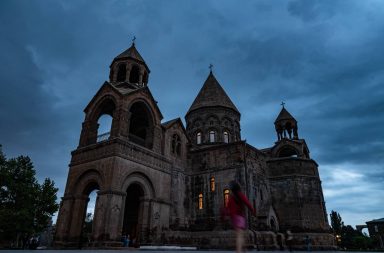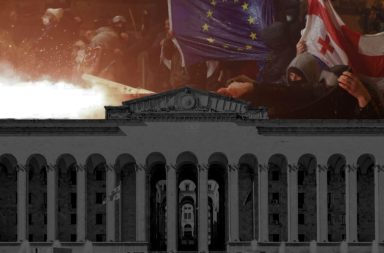By David Beglaryan
Almost a century ago, the Soviet regime in Armenia created the public organization «Անաստվածների Միություն» (Anastvatsneri Miutyun) — the Union of the Godless — tasked with eradicating religion and dismantling the moral authority of the Armenian Apostolic Church. Between 1928 and 1933, the group published the magazine «Անաստված» (Anastvats), later continuing as a newspaper until 1935.
The editor of «Անաստված», Petik Torosyan, went on to serve as People’s Commissar of Justice and Prosecutor of the Armenian SSR from 1933 to 1937. A true product of totalitarian ideology, he personally signed execution orders for over 140 Armenian clergymen, paving the way for Stalin’s Great Terror. In 1938, Torosyan himself was executed — a grim reminder that those who dig graves for others often end up in them.
One might imagine that at the foot of the execution wall, the editor of «Անաստված» finally realized that God exists — if only for a single moment before his death.
A Modern “Union of the Godless”
Nearly a century later, echoes of the same ideology have resurfaced in today’s Armenia, where the government of Nikol Pashinyan has intensified its attack on the Armenian Apostolic Church. What began as rhetorical hostility has evolved into open persecution of clergy, criminal charges against bishops, and a campaign to weaken the Church’s public role.
Recent months have seen the arrests of several senior clerics:
- Archbishop Mikael Ajapahyan was sentenced in October 2025 to two years in prison for allegedly calling for regime change — a charge critics describe as political retribution.
- Bishop Mkrtich Proshyan, Primate of the Aragatsotn Diocese, and six priests were detained on accusations of coercion, theft, and “electoral interference.” The Church has condemned the arrests as part of a systematic campaign to silence its leadership.
- Archbishop Bagrat Galstanyan, who became the face of anti-government protests, was also arrested and charged with plotting to overthrow the constitutional order.
These detentions are not isolated incidents. They represent an ongoing state-led assault on the Church, an attempt to dismantle one of the last institutions in Armenia that still commands moral authority and public trust.
The Purpose Behind the Attack
The Church is being treated not as a spiritual body but as a political opponent. Its leaders are labeled as conspirators, its sermons treated as subversion, and its followers painted as enemies of progress. The goal is not justice — it is obedience.
By targeting the Church, the government seeks to eliminate an institution capable of uniting citizens around moral and national principles beyond state control. In doing so, it mirrors the same logic that drove the «Անաստվածների Միություն»: destroy faith, weaken identity, and centralize power.
Why This Matters
When faith becomes criminalized, conscience becomes a threat. The Armenian Apostolic Church has for centuries stood as the cornerstone of national identity, surviving empires, invasions, and genocide. If today’s leadership continues its assault unchecked, Armenia risks repeating its darkest historical patterns — this time under the banner of democracy.
The arrests of high-ranking clergymen are not about the law. They are about control. And control, when it replaces conscience, is the beginning of tyranny.
A Warning from History
If Nikol truly wishes to emulate history, he might as well formally revive the «Անաստվածների Միություն» and lead it himself — not through Facebook tirades, but through a new edition of «Անաստված», just as Petik Torosyan did in 1930s Yerevan.
History doesn’t just repeat in Armenia — it reincarnates. The tools are new, but the intent is familiar. The «Անաստվածների Միություն» once used propaganda and bullets; today’s version relies on algorithms and prosecutions. Yet the goal remains unchanged: silence the Church, silence the nation’s conscience.
Armenia deserves better than another age of godlessness masquerading as governance.


